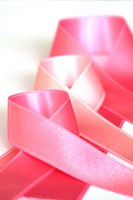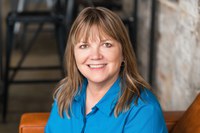Prairie Fare: This breast cancer quiz could save your life
(Click an image below to view a high-resolution image that can be downloaded)
Every time I have a medical test, I feel some anxiety.
“What if?” goes through my head until I can access the results in a letter or email.
I am sure many of you know what I mean.
However, not knowing does not make underlying health problems go away.
Most, if not all, of us have lost at least one person close to us due to cancer, or at least supported people through the treatment.
October is Breast Cancer Awareness month. Try this quiz about breast cancer based on information from the Centers for Disease Control and Prevention.
- What are three risk factors for breast cancer that you cannot change?
- What are four risk factors for breast cancer that you can modify?
- What are the two leading causes of cancer death in the U.S.?
- About how many cases of breast cancer were reported in 2022, and how many died?
- What is the best way to find breast cancer in its early stages?
- Can men get breast cancer? What percent of breast cancer cases occur in men?
Answers
- Being female and getting older are two key risk factors. Having a strong family history of breast cancer also places you at greater risk. While you cannot change these things, you can visit with your doctor about medical therapies that may reduce your risk.
- Women who are not physically active, are obese after menopause, have their first pregnancy after age 30 and have not breastfed their children are at greater risk. Taking hormones and drinking alcohol also raises the risk.
- Lung cancer and breast cancer are leading causes of cancer death. Among Black women and Hispanic women, breast cancer is the leading cause of death.
- According to the most recent available data, about 280,000 cases of breast cancer in women were reported in 2022, and more than 42,000 died in 2023.
- For women with average risk of cancer, having an annual mammogram (or at the frequency recommended by your healthcare provider) is the best way to assess. If breast cancer is discovered at an early stage, the five-year survival rate increases.
- Yes, men can get breast cancer. About 1% of breast cancer patients are male.
Only about one in four women is aware that following a healthy diet may reduce their risk of developing breast cancer, despite the established link between diet and cancer.
Yet, three in 10 breast cancer cases can be linked to risk factors that can be changed, such as following a healthy diet and getting regular physical activity. Eating whole, unprocessed food can help reduce the risk of getting breast cancer.
Not one specific food group will 100% prevent you from getting breast cancer, but specific food groups have been identified to help reduce the risk of getting breast cancer.
- Incorporate more fruits and vegetables in your diet. Build to 4 ½ cups of fruits and vegetables daily. Fruits and vegetables are great sources of antioxidants, which play a key role in neutralizing potentially cancerous cells.
- Feed your gut microbiome. Your gut microbiome is a collection of trillions of tiny bacteria living in your digestive system that helps to support your immune system and keep you healthy. A healthy gut with a diverse gut microbiome helps to support your immune system and break down potential cancer-causing substances.
- Get more fiber in your diet. Fiber helps your body control blood sugar levels and lower levels of estrogen. Increasing fiber in your diet may also help prevent breast cancer by feeding your gut microbiome.
- Moderate your intake of saturated fat, trans fat and added sugar.
- Refrain from alcohol consumption. Indulging in just one alcohol-containing drink per day can increase your breast cancer risk by 7% compared to those who abstain from alcohol.
Awareness, healthy habits and routine screenings truly can make a life-saving difference.
2026 Calendar Giveaway
For the past several years, we have been developing an annual “Field to Fork” calendar featuring fruits and vegetables, health information and a monthly recipe. As a special opportunity for readers, we will draw names to award free calendars to at least 25 lucky winners. I will ask where you read Prairie Fare and any ideas you have for future columns. Your name and address are only used for the sake of the drawing.
To enter, visit https://bit.ly/PFcalendar2026, or email julie.garden-robinson@ndsu.edu (with the subject line “Calendar Drawing”) and provide the information above. See www.ag.ndsu.edu/fieldtofork for more information. Fill in the form by Nov. 15 for your chance to win.
Here’s an antioxidant-rich dip that’s perfect for fall gatherings. Serve with chips or crackers. While this recipe can be frozen, it cannot be canned.
Fire Roasted Black Bean Salsa
1 (15-ounce) can low-sodium black beans, drained and rinsed
1 (8-ounce) can fire-roasted tomatoes, drained
½ medium white onion, chopped
½ green bell pepper, chopped
2 tablespoons dried cilantro
2 tablespoons lime juice (fresh or bottled)
Add all ingredients to a bowl and stir to combine.
Makes eight servings. Each serving has 60 calories, 0 grams (g) fat, 4 g protein, 12 g carbohydrate, 5 g fiber and 150 milligrams sodium.
NDSU Agriculture Communication – Oct. 16, 2025
Source: Julie Garden-Robinson, 701-231-7187, julie.garden-robinson@ndsu.edu
Editor: Dominic Erickson, 701-231-5546, dominic.erickson@ndsu.edu




